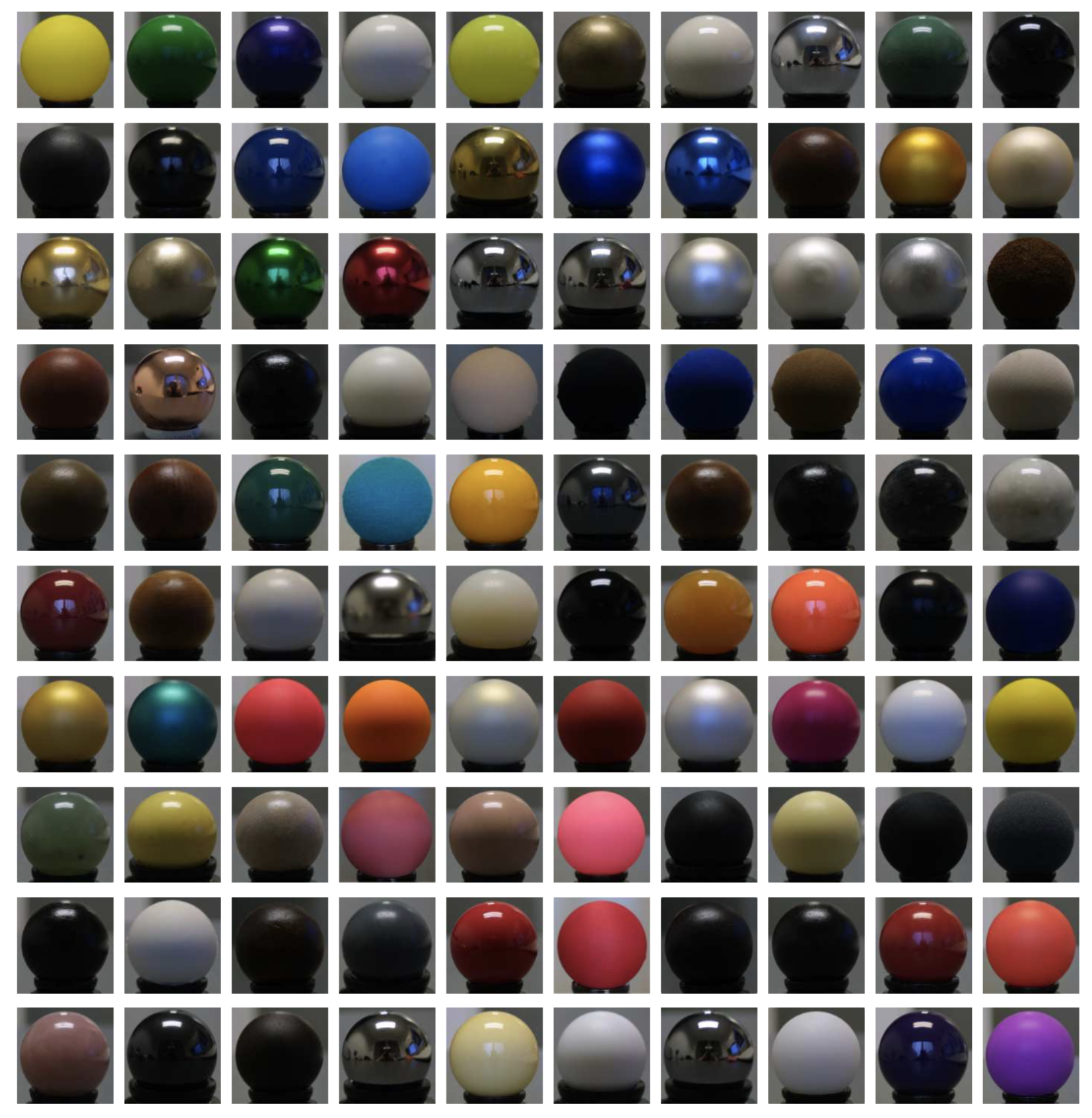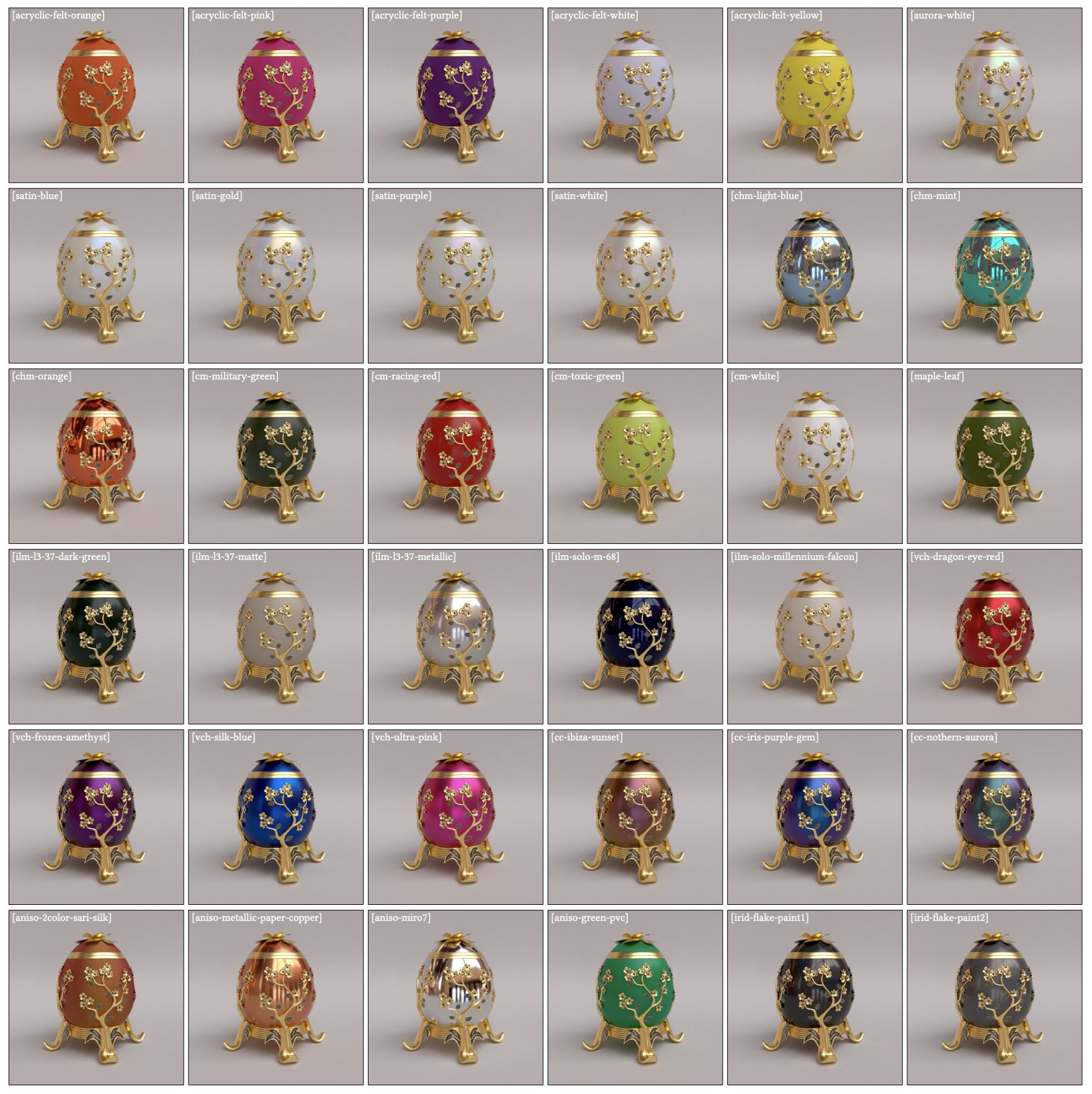BRDF Editing Tool Demos
- MERL only trained VAE with 8 latent values
- MERL + RGL trained VAE with 12 latent values
- Demo 1 with expanded P9 and P10 latent space
- Grayscale MERL + RGL trained VAE with 3 latent values per color
- Same network from 4, used wheel for color changes
Motivation
Designing 3D worlds is challenging for many and remains time consuming to perfect. One limiting factor is constructing realistic materials to give the world life. Existing material generation tools are limited in expressiveness. Measured bidirectional reflectance distribution functions (BRDFs) offer a unique mechanism for capturing and rendering real world materials. These datasets are expensive to collect and use too much memory to be practical for large scale computer graphics applications, such as full 3D VR environments. Current solutions leverage deep learning to compress these materials or rly on limited analytical solutions. Although these approaches improve usefulness in rendering pipelines, they fail to give artists deep control over the material appearance. This work presents a machine learning approach that generates a parameter space of the measured BRDF data to enable material editing.
Datasets
Mitsubishi Electric Research Laboratories (MERL) BRDF Dataset Wojciech Matusik, Hanspeter Pfister, Matt Brand and Leonard McMillan. “A Data-Driven Reflectance Model”. ACM Transactions on Graphics 22, 3(2003), 759-769.
Their acquisition system requires a spherically homogenous sample of the material. The system is placed in a completely isolated room painted in black matte. Then, a high dynamic range RGB image is taken at many camera viewing angles and light incident angles according to the sampling scheme. They choose Rusinkiewicz's coordinate system and discretize \(\theta_h, \theta_d\) into 90 bins, and \(\phi_d\) into 180 bins. In total, each isotropic material is approximately 35MB and takes 4 hours to collect.

EPFL's Realistic Graphics Lab Material Database An Adaptive Parameterization for Efficient Material Acquisition and Rendering Jonathan Dupuy (Unity Technologies) and Wenzel Jakob (EPFL) In ACM Transactions on Graphics (Proceedings of SIGGRAPH Asia 2018)
This work introduces an adaptive parameterization to lower the required samples and improve resolution for specular materials. Each isotropic material on average takes under 1MB to store.

Methods
Trained a dense auto-encoder to learn a latent space for materials. KL divergence is used to disentangle the latent space. See our writeup for a more detailed explaination and results.